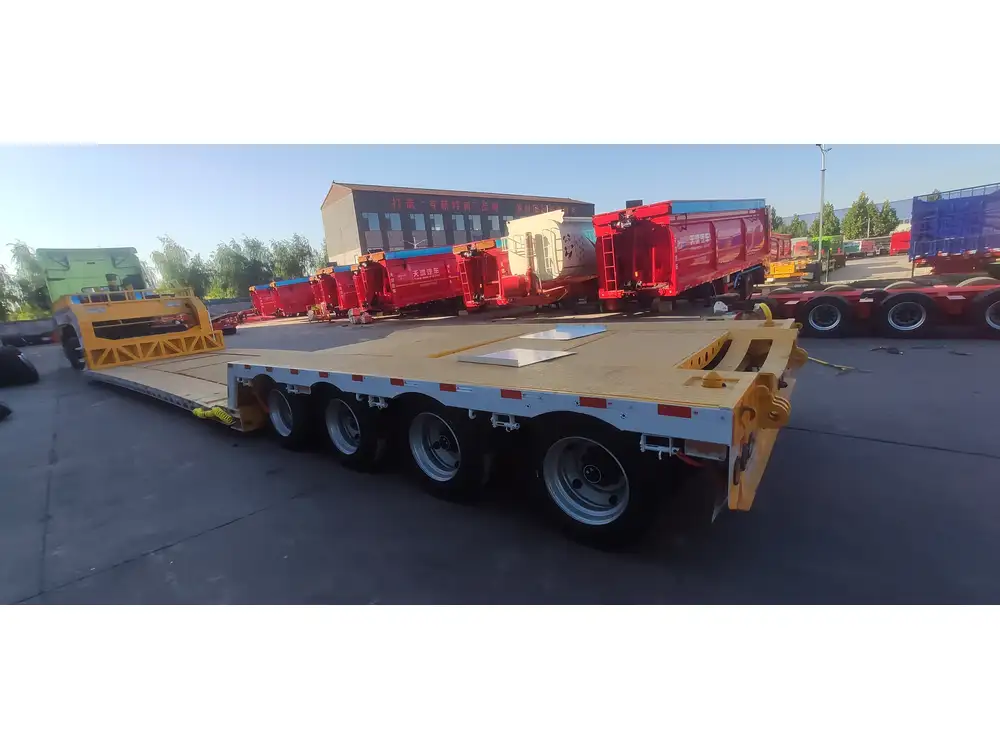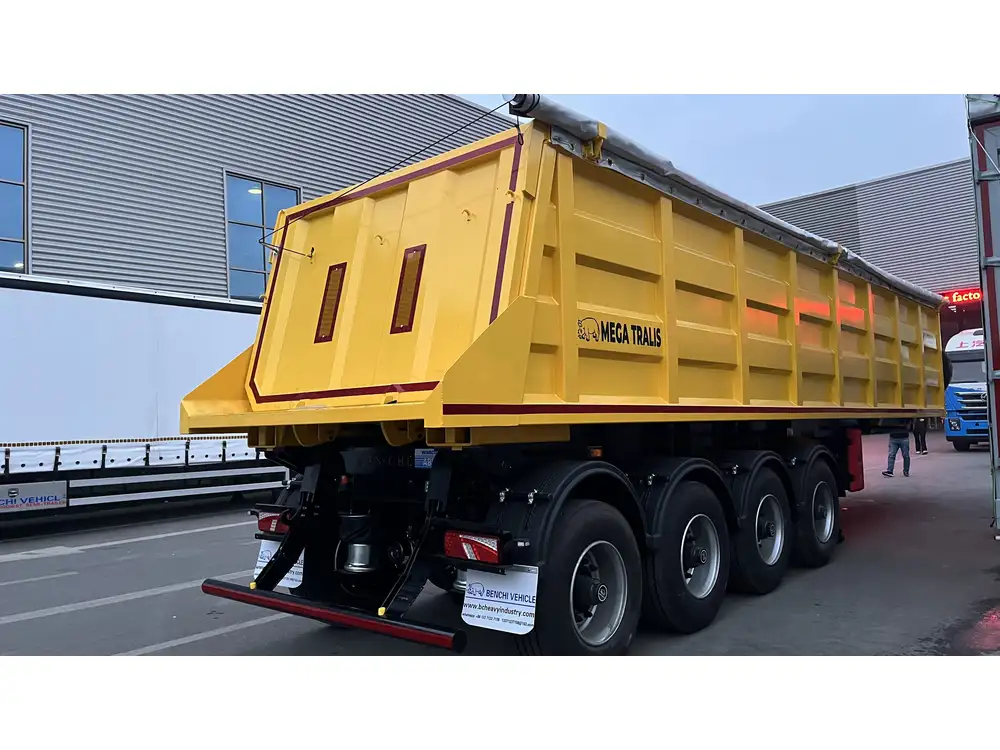Introduction to Flatbed Trailers
Flatbed trailers are versatile transportation tools essential for hauling an array of goods, particularly larger items that may not fit within traditional enclosed trailers. These trailers feature a flat, open deck without sides or a roof, providing an excellent solution for transporting heavy machinery, construction materials, and oversized freight. Given their unique structure, understanding the weight of flatbed trailers, along with the potential weight they can carry, is crucial for manufacturers, transport companies, and logistics managers alike.
The Weight Basics of Flatbed Trailers
Flatbed trailers come in various configurations and materials, each affecting their overall weight. The most common types include:
| Type of Flatbed Trailer | Average Weight | Common Uses |
|---|---|---|
| Standard Flatbed | 3,000 – 5,000 lbs | General hauling of freight |
| Heavy-Duty Flatbed | 5,000 – 12,000 lbs | Transporting construction equipment and machinery |
| Lowboy Flatbed | 8,000 – 16,000 lbs | Hauling oversized loads like aircraft engines |
| Step Deck Flatbed | 5,000 – 10,000 lbs | Transporting tall or heavy loads that need additional height clearance |

Key Factors Influencing Flatbed Trailer Weight
Material Composition
- Steel: Offers strength and durability but is heavier.
- Aluminum: Lighter and corrosion-resistant, often preferred for reducing overall weight but maintaining structural integrity.
Length and Configuration
- Common lengths range from 20 feet to 53 feet, with longer trailers typically weighing more due to additional material. The configuration, such as having a drop deck or multiple axles, also influences weight.
Accessories and Modifications
- Add-ons like side rails, winches, and toolboxes increase the trailer’s total weight. Customizations for specialized hauling can further complicate weight assessments.
Axle Count
- Trailers with more axles can carry heavier loads, but each added axle increases the overall weight. Typically, flatbed trailers have two to five axles.
Calculating Load Capacities
Understanding the weight of the trailer itself is just one aspect; knowing the Total Gross Vehicle Weight Rating (GVWR) is equally important. The GVWR includes the weight of the trailer plus the maximum cargo it can safely carry.
Determine Trailer Weight
- Start by weighing the empty trailer on a certified scale.
Allocate Cargo Weight
- Consider how much weight the vehicle towing the trailer can manage based on its Gross Vehicle Weight Rating (GVWR).
Combine Weights
- Adding trailer weight and the cargo weight gives you the total weight. Ensure this does not exceed the truck’s towing capacity.
Legal Considerations and Weight Limits
Every state in the U.S. has specific laws governing the maximum weight a vehicle can carry, both for safety and road maintenance. Typical federal regulations impose a limit on the total weight of a vehicle, including:
- Single Axle: Max of 20,000 lbs.
- Tandem Axle: Max of 34,000 lbs.
- Gross Combination Weight: Maximum weight of 80,000 lbs for the entire combination of truck and trailer.
It’s vital for manufacturers and transporters to comply with these regulations to avoid penalties and ensure safe operation on public highways.

Weight Distribution for Safety and Efficiency
Managing weight distribution is crucial for safe hauling practices. Uneven weight distribution can lead to trailer sway, which may result in accidents. Here’s how to optimize load placement:
- Center of Gravity: Place heavier loads closer to the axle for better balance.
- Secure Loads Adequately: Use straps, chains, and tarps to prevent shifting during transport.
Weight Considerations When Choosing a Flatbed Trailer
When selecting a flatbed trailer, consider the following:
Payload Needs: Assess what you will transport—consider weight and dimensions.
Material Preferences: Choose between steel or aluminum based on structural integrity versus weight savings.
Cost vs. Payload Efficiency: Sometimes spending more upfront on a higher capacity trailer saves costs in the long run through better payload efficiency.
===
Frequently Asked Questions About Flatbed Trailer Weight

How Much Does a Flatbed Trailer Weigh?
The weight of a flatbed trailer varies substantially based on type, size, and material, typically ranging from 3,000 to 16,000 lbs.
What Is the Maximum Weight a Flatbed Trailer Can Carry?
This varies by trailer configuration, but it can be between 20,000 lbs to 34,000 lbs for tandem axles, depending on state laws and trailer specifications.
How Do I Know If I Can Tow It Safely?
Always consult the Gross Vehicle Weight Ratings (GVWR) of both your vehicle and trailer. Ensure that your towing vehicle’s capacity exceeds the total weight of the trailer and its cargo.

Can I Customize My Flatbed Trailer for Specific Loads?
Yes, trailers can often be customized with additional features like ramps, toolboxes, and tie-downs, although it will add to its weight.
Conclusion: Mastering Flatbed Trailer Weight Management
Understanding how heavy a flatbed trailer is, along with its loading capacities and regulatory limitations, is essential in the transportation industry. Manufacturers and logistics managers must approach their trailer choice with a comprehensive mindset, evaluating daily operational needs and compliance. An informed decision can enhance efficiency, improve safety, and optimize costs in hauling operations.
By maintaining awareness of the factors influencing trailer weight and adhering to legal standards, businesses can leverage the unique advantages of flatbed trailers and contribute to a smoother logistical process. With appropriate strategies for load management and distribution, we pave the way for a sustainable and effective transportation model that meets the demands of our ever-evolving industrial landscape.



